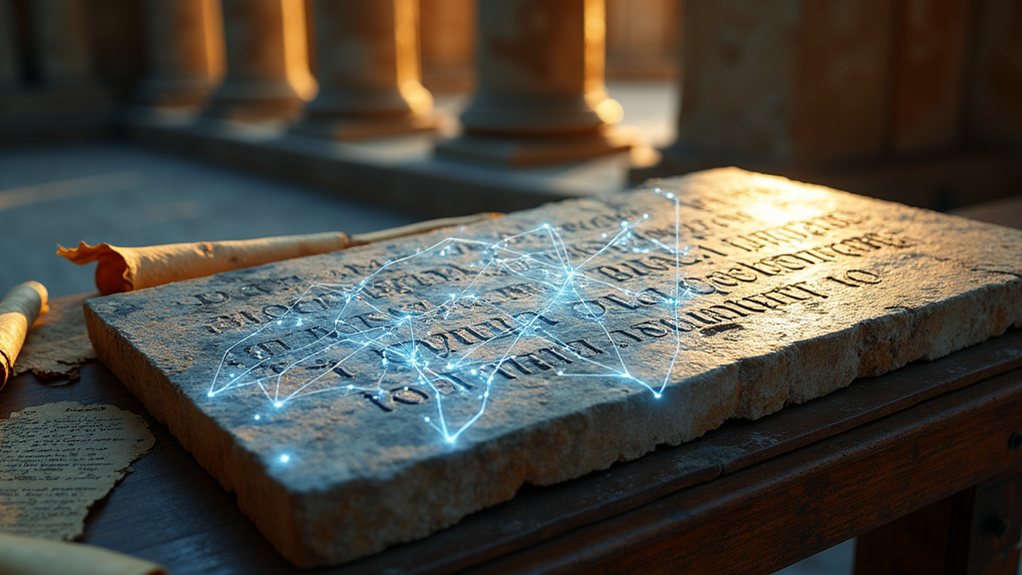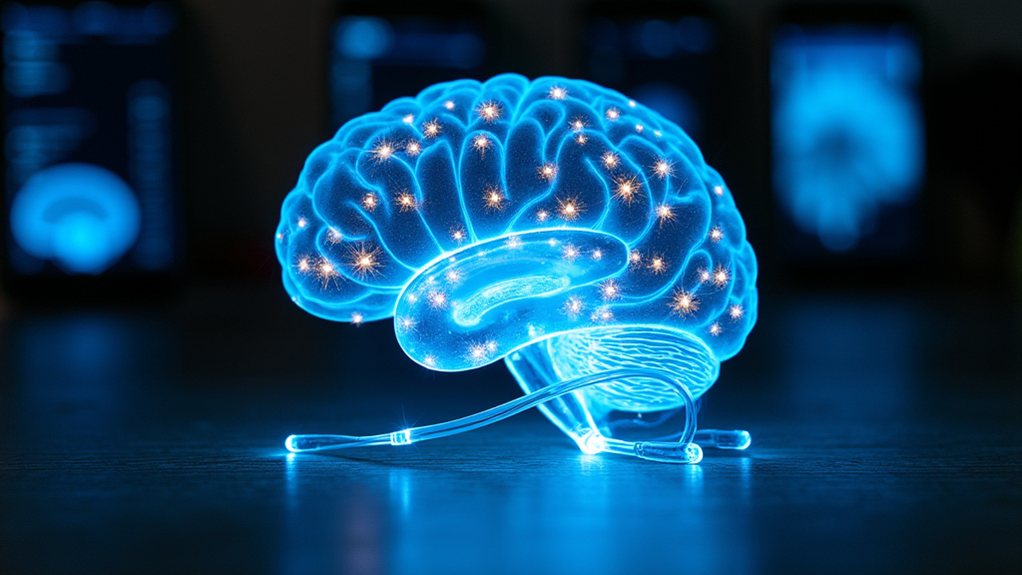AI has revolutionized Latin text analysis through neural machine translation that makes ancient inscriptions readable, BERT-based models that decode ambiguous phrases with startling accuracy, and morphological parsing algorithms that identify grammatical relationships faster than classical scholars ever imagined. These systems process millions of Latin tokens, revealing hidden patterns across genres while mapping intertextual networks between Roman writers. The technology fills gaps in fragmentary texts and performs authorship attribution with precision that would impress Quintilian himself—and there’s much more happening behind the digital curtain.
While Latin teachers might worry about job security, artificial intelligence is quietly revolutionizing how scholars decode the language of Caesar and Cicero.
Neural machine translation models are finally making Latin accessible to mere mortals. These systems leverage massive annotated corpora and deep learning to produce translations that actually make sense—a feat that would have impressed even the most learned Roman senator.
Neural networks now decode Caesar’s prose with an accuracy that would make ancient Roman scholars simultaneously proud and obsolete.
BERT-based models excel at deciphering contextual meanings, particularly for those maddeningly ambiguous Latin phrases that have stumped classicists for centuries. Think of it as having a really smart Roman friend who never gets tired of explaining grammar.
Perhaps most intriguingly, AI can now suggest translations for fragmentary inscriptions****—those weathered stone tablets that look like ancient Twitter posts with half the characters missing. Machine learning fills in the gaps, making previously untranslatable materials suddenly readable.
The morphological parsing capabilities are genuinely impressive. Modern algorithms dissect complex Latin grammatical structures with surgical precision, identifying lemmata, morphological tags, and syntactic dependencies. The Ancient Greek and Latin Dependency Treebank supports this automated parsing, creating visualizations of grammatical relationships that would make Quintilian weep with joy.
Word sense disambiguation represents another breakthrough. Deep learning models like BERT encode context and polysemy more effectively than traditional frequency methods, detecting subtle semantic distinctions that human readers might miss. They identify words appearing in similar contexts, supporting intertextual research across the vast Latin literary tradition.
The scale of corpus mining is staggering. AI processes millions of Latin text tokens, uncovering patterns invisible to human inspection. Algorithms discover recurring syntactic structures across genres and time periods, revealing how Latin evolved from republic to empire. Digital platforms now provide corpus-specific parsers for ancient languages that identify lexical tokens and their grammatical dependencies with unprecedented accuracy. These automated systems deliver real-time insights from previously inaccessible textual data, allowing scholars to identify patterns and linguistic shifts as they analyze vast collections of Latin manuscripts. Effective implementation of these systems requires thoughtful integration into existing scholarly workflows to maximize their potential for transforming classical studies.
These systems identify unique phraseological patterns associated with specific authors, supporting authorship attribution studies. They map intertextual links and allusion networks, illuminating how Roman writers borrowed from and responded to each other.
Statistical collocation methods clarify semantic networks within Latin lexical databases, while pattern recognition detects linguistic changes and regional variations over time.
The continuous feedback loops improve everything—as scholars review and correct AI outputs, the models become increasingly sophisticated, creating a virtuous cycle of enhanced understanding.









